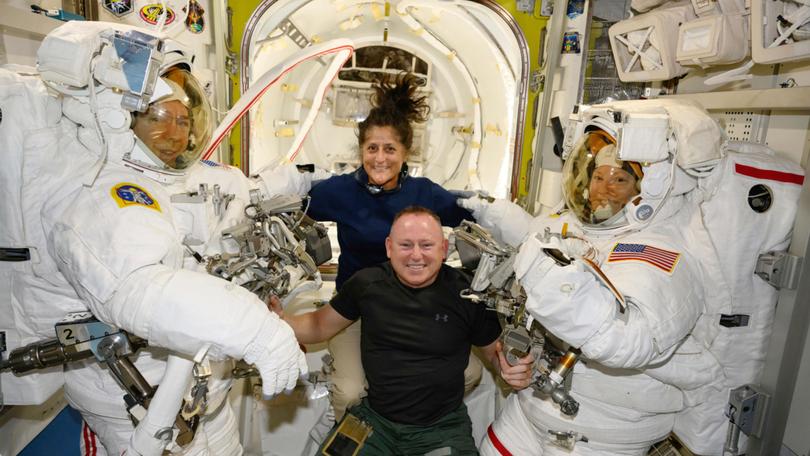NASA says no return date yet for astronauts and troubled Boeing capsule at space station

Already more than a month late getting back, two NASA astronauts will remain at the International Space Station until engineers finish working on problems plaguing their Boeing capsule, officials said Thursday.
Test pilots Butch Wilmore and Suni Williams were supposed to visit the orbiting lab for about a week and return in mid-June, but thruster failures and helium leaks on Boeing’s new Starliner capsule prompted NASA and Boeing to keep them up longer.
NASA’s commercial crew program manager Steve Stich said mission managers are not ready to announce a return date. The goal is to bring Wilmore and Williams back aboard Starliner, he added.
Sign up to The Nightly's newsletters.
Get the first look at the digital newspaper, curated daily stories and breaking headlines delivered to your inbox.
By continuing you agree to our Terms and Privacy Policy.“We’ll come home when we’re ready,” Stich said.
Stich acknowledged that backup options are under review. SpaceX’s Dragon capsule is another means of getting NASA astronauts to and from the space station.
“NASA always has contingency options,” he said.
Engineers last week completed testing on a spare thruster in the New Mexico desert and will rip it apart to try to understand what went wrong ahead of the Starliner’s docking. Five thrusters failed as the capsule approached the space station on June 6, a day after liftoff. Four have since been reactivated.
It appears degraded seals are to blame for the helium leaks and thruster problems — entirely separate issues — but more analysis is needed. The team will test-fire the capsule’s thrusters this weekend while docked to the space station to gather more data, said Boeing’s Mark Nappi.
Each of the 28 maneuvering thrusters can fit in a hand and weighs 2 pounds (1 kilogram). The capsule is also outfitted with bigger engines for dropping out of orbit at flight’s end. All these are part of a segment that is discarded before landing, which means nothing to study for future flights.
After the space shuttles retired, NASA hired private companies for astronaut rides to the space station, paying Boeing and SpaceX billions of dollars.
This was the Boeing’s first test flight with a crew aboard. The initial demo in 2019, flying empty, never made it to the space station because of bad software, and Boeing repeated the test in 2022. More issues later cropped up.
SpaceX has been ferrying astronauts since 2020. SpaceX’s Falcon 9 rockets have been grounded for the past two weeks because of an upper-stage failure on a satellite-delivery mission. The longer the stand-down continues, the more likely upcoming crew flights will be delayed.
